June is here! Well…almost. When I think of June, I am reminded of Pride. And while I think that every day should be filled with inclusivity in all its forms, I know that this doesn’t happen in all spaces. In this post, I would like to highlight two of the amazing resources that ETFO has to offer as we continue conversations around equity and inclusion, specifically for members of the LGBTQ Community.
While this year is slated to mark 50 years since the decriminalization for members of the LGBTQ community in Canada, we know that members continue to face issues of inequity and discrimination on an ongoing basis. In classrooms and schools, now more than ever, I believe that students need to know that these spaces must have room for everyone. In education, everyone deserves to see their whole selves represented and as educators, we have an onus to do just that, no matter of our own biases.
ETFO believes that LGBTQ education and training creates safer working and learning conditions for everyone. As such, on their site, you’ll find an abundance of resources. They have made the work of creating inclusive environments more accessible for educators. I’m highlighting two resources that I think would be incredible opportunities to guide meaningful conversations within classrooms.
For the 2014 World Pride, the Canadian Lesbian and Gay Archives (CLGA) and Pride Toronto collaborated to create an LGBTQ Education Timeline poster. The poster was created to show the historical changes in LGBTQ education and issues in Canada. In 2016, ETFO collaborated with the CLGA to update the timeline and add an accompanying booklet.
Like a bulletin board with memorabilia of important events you’ve gathered over time, the poster is spectacular in its display of information in a clear and concise way for students to be able to read and understand. While the poster gives a visual representation of historical events, the booklet includes more descriptions and links throughout and in the reference section that gives even more in depth information. The purpose of these resources is for educators to gain knowledge for themselves and to use within their classrooms. While digging in, I found myself both being ashamed for not taking the time before to educate myself more and amazed by all of the work that has gone on so far. I think the poster might be a great jumping off point for students in middle or high school to consider what has already been done and what new or innovative ideas they might like to create within their own school communities. The idea being to bring awareness to current issues and as a call for action for greater inclusivity.
The Every Teacher Project on LGBTQ-Inclusive Education in Canada’s K-12 Schools
The Every Teacher Project Recommendations Toolkit is the culmination of a national research effort to advance knowledge on LGBTQ-inclusive education. This Toolkit is a guide to support the implementation of the Every Teacher Project recommendations for all levels of the school system. It was developed for use by teachers, teacher organizations, and others wanting to support the development of LGBTQ-inclusive schools.
I have to start off by saying that the glossary of terms was extremely helpful. For me, understanding, especially as it relates to terminology, is an essential first step when we think about gaining a greater awareness. For that alone, I would say that this resource was phenomenal.
I also really love the appendices with a wealth of further resources. I especially appreciated page 207 which included Days of Awareness/Events and their significance. I’m learning more and more the value that celebrating these days – and not just for the sake of celebrating but for the acknowledgement of individuals for whom these days are significant – is important to students. The more we highlight for our students the significance these days represent, the greater capacity for empathy we are able to build as students learn to understand the experiences of others. That empathy can lead to actionable change as they are either supported and accepted or work to become allies.
The above are just two of many resources available on the site. Please take a look and some time to reflect on your own biases, knowledge and classroom practice. If conversations around equity and inclusion haven’t already been happening in classrooms and schools, there is still a few more weeks to go. Take some time to dig into these resources for yourself and have brave conversations in your classrooms. I’ve said it before, as educators we are in the unique position to help our students develop empathy and to support the next generation as they are eager to create change in the world. Our classrooms and schools need to be safe places for them to be able to do this work!
Happy Pride!

 (<<<our student create wall)
(<<<our student create wall)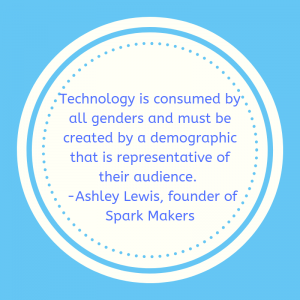
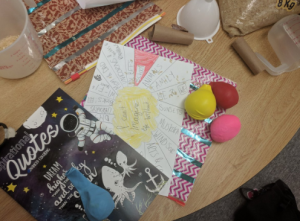 When building out toolkits, students used ideas from our discussions and activities from our sessions together to help build their own physical kits. We started off with ziploc bags and students decorated them with duct tape. This really was an idea from one of the students who had used it in the past to create her own pencil cases and she thought it would be a great – and inexpensive – way to personalize our own toolkits. Once the toolkits were designed, it was time to think about the items that they wanted to include.
When building out toolkits, students used ideas from our discussions and activities from our sessions together to help build their own physical kits. We started off with ziploc bags and students decorated them with duct tape. This really was an idea from one of the students who had used it in the past to create her own pencil cases and she thought it would be a great – and inexpensive – way to personalize our own toolkits. Once the toolkits were designed, it was time to think about the items that they wanted to include. 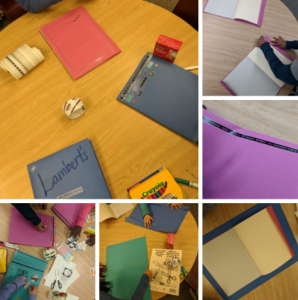 Wellness Journal
Wellness Journal 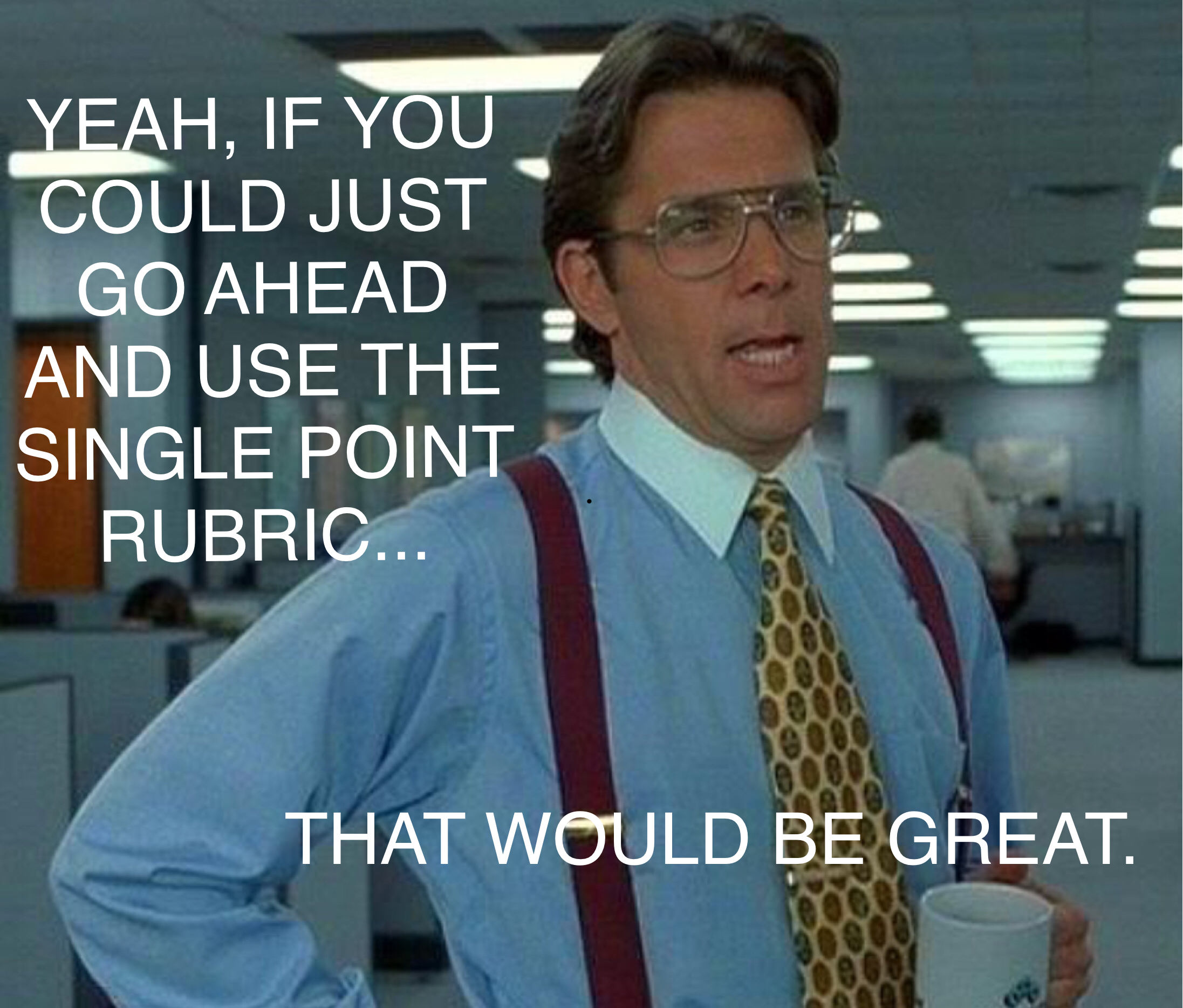


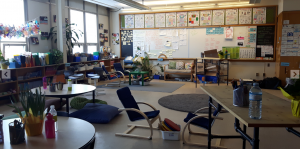 Chapter 2 ends with classroom set-up. As many of you know, I was a passionate advocate of flexible seating in the classroom. Years ago, my students worked on a Math project where they re-designed our classroom while taking into consideration their learning needs. They measured the classroom and petitioned our Principal for some money for items they thought would better meet their learning needs. Some wanted standing tables while other wanted opportunities to sit on the floor. We created a learning environment that worked best for us and the autonomy and increased levels of ownership in the classroom were an indication that students felt as thought the classroom was their space. Now I know that we were lucky in that we were given some money to redesign but since leaving that school, I learned 2 important lessons: where possible, let students design the space so they feel that sense of ownership in the space and be intentional about what you chose to include in your classroom space. This picture of our space looks quite full and I would have to say that every item spoke to who we were as a group. On pages 25 to 30, I love that each of the classroom learning spaces are different and yet the amazing educators can speak to the differences that they have included in their classrooms with intentionality. I just started feeling a little nostalgic about designing learning spaces!
Chapter 2 ends with classroom set-up. As many of you know, I was a passionate advocate of flexible seating in the classroom. Years ago, my students worked on a Math project where they re-designed our classroom while taking into consideration their learning needs. They measured the classroom and petitioned our Principal for some money for items they thought would better meet their learning needs. Some wanted standing tables while other wanted opportunities to sit on the floor. We created a learning environment that worked best for us and the autonomy and increased levels of ownership in the classroom were an indication that students felt as thought the classroom was their space. Now I know that we were lucky in that we were given some money to redesign but since leaving that school, I learned 2 important lessons: where possible, let students design the space so they feel that sense of ownership in the space and be intentional about what you chose to include in your classroom space. This picture of our space looks quite full and I would have to say that every item spoke to who we were as a group. On pages 25 to 30, I love that each of the classroom learning spaces are different and yet the amazing educators can speak to the differences that they have included in their classrooms with intentionality. I just started feeling a little nostalgic about designing learning spaces!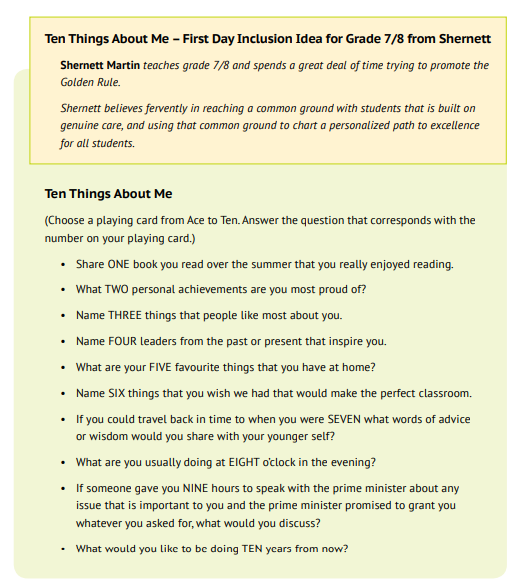 Ideas
Ideas